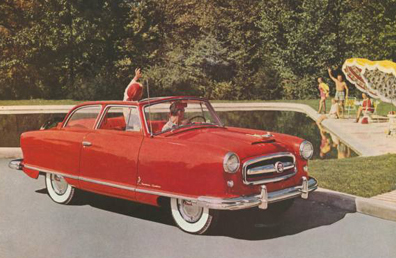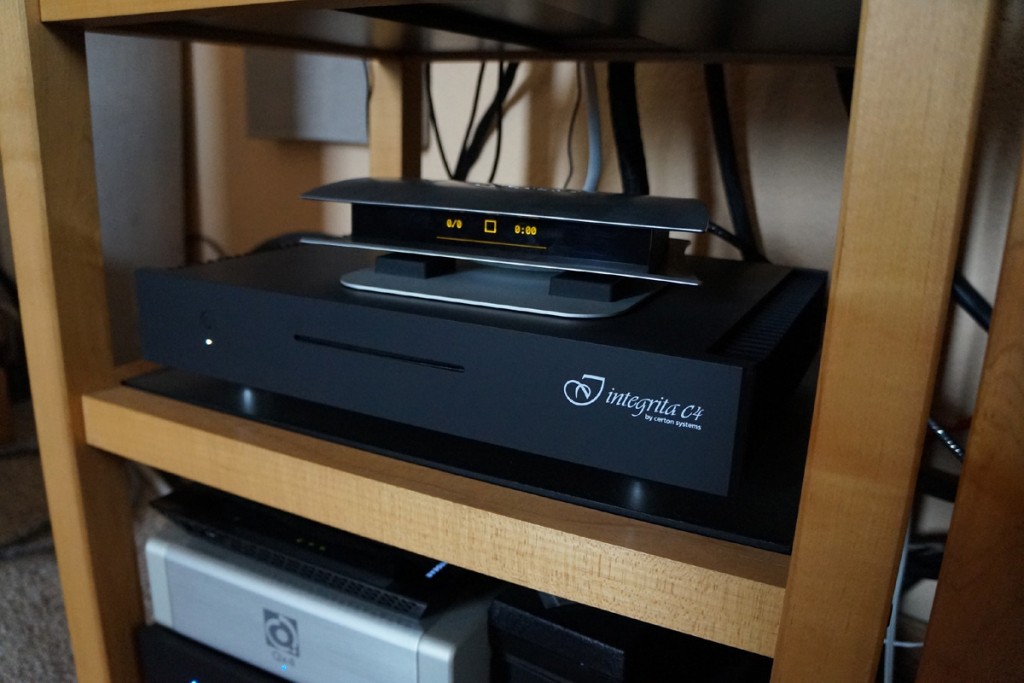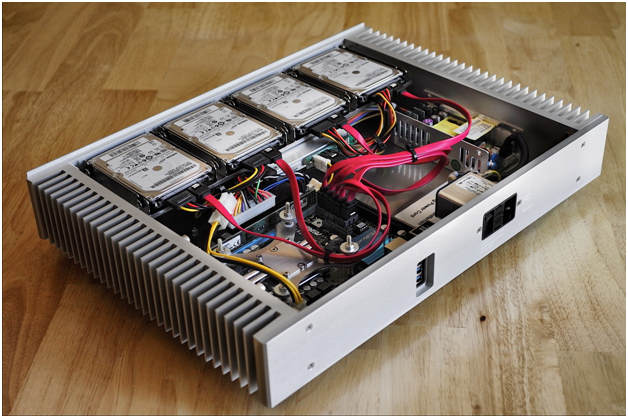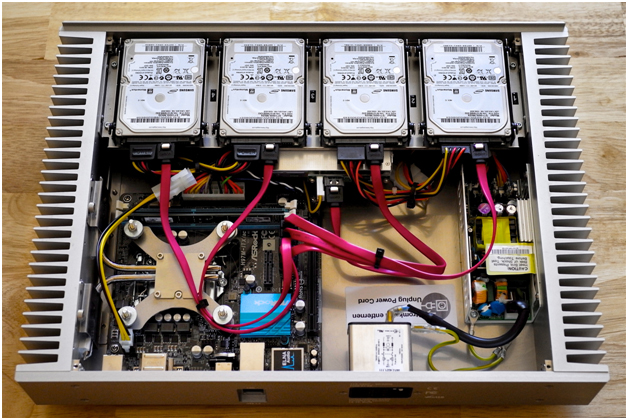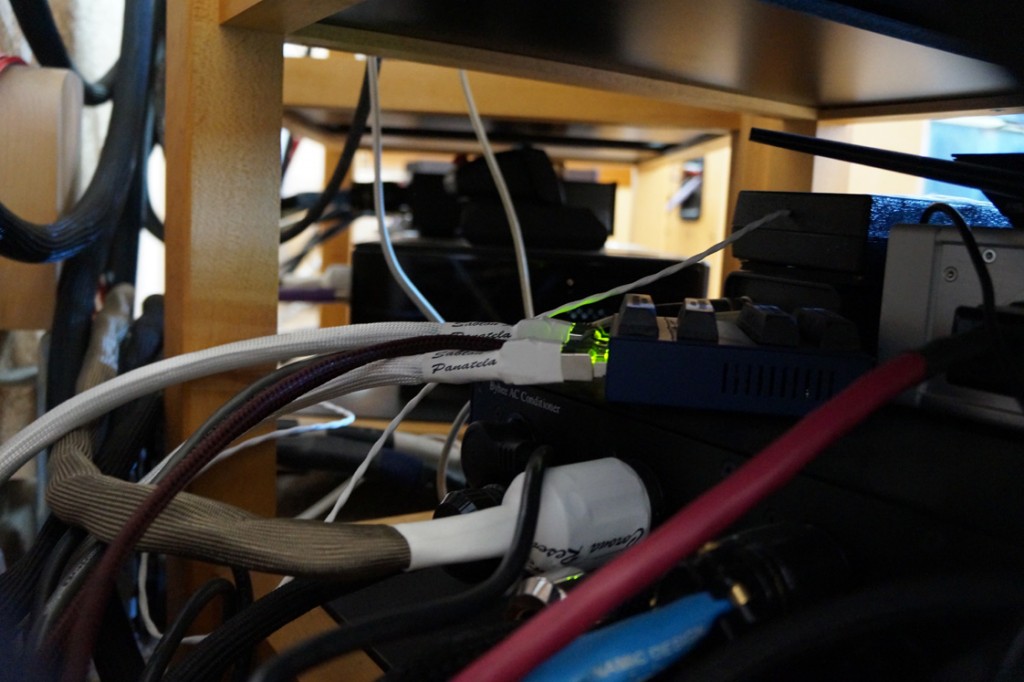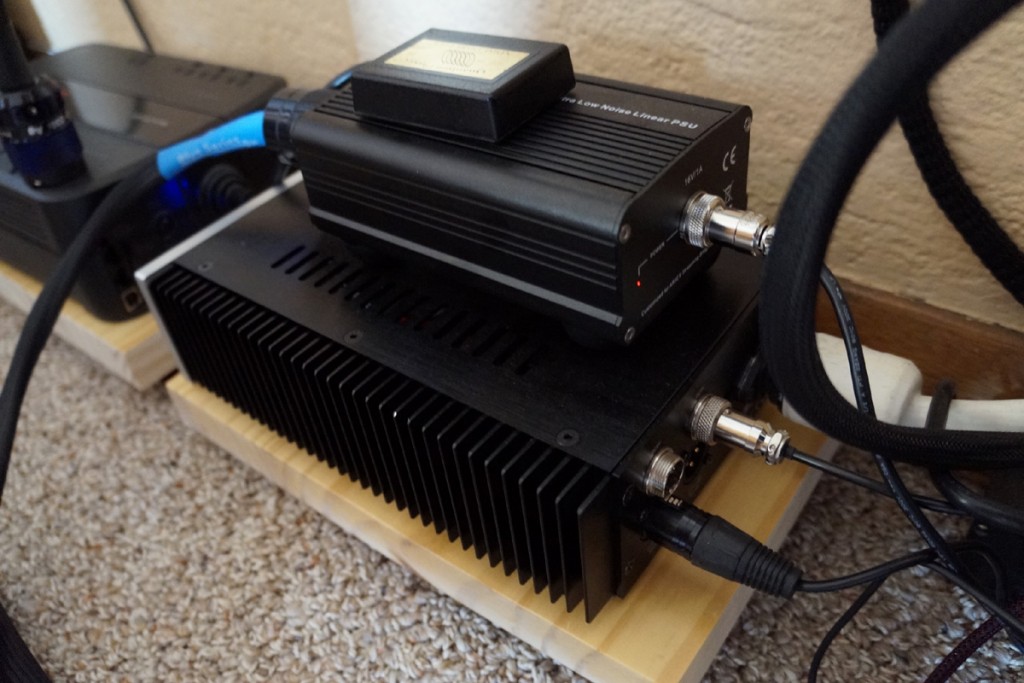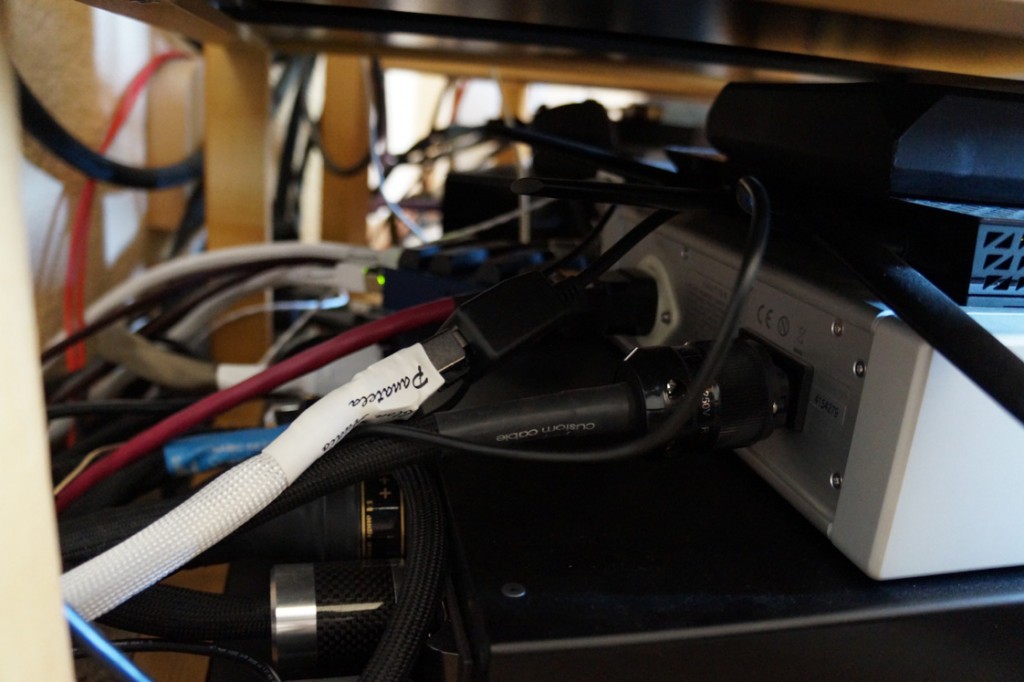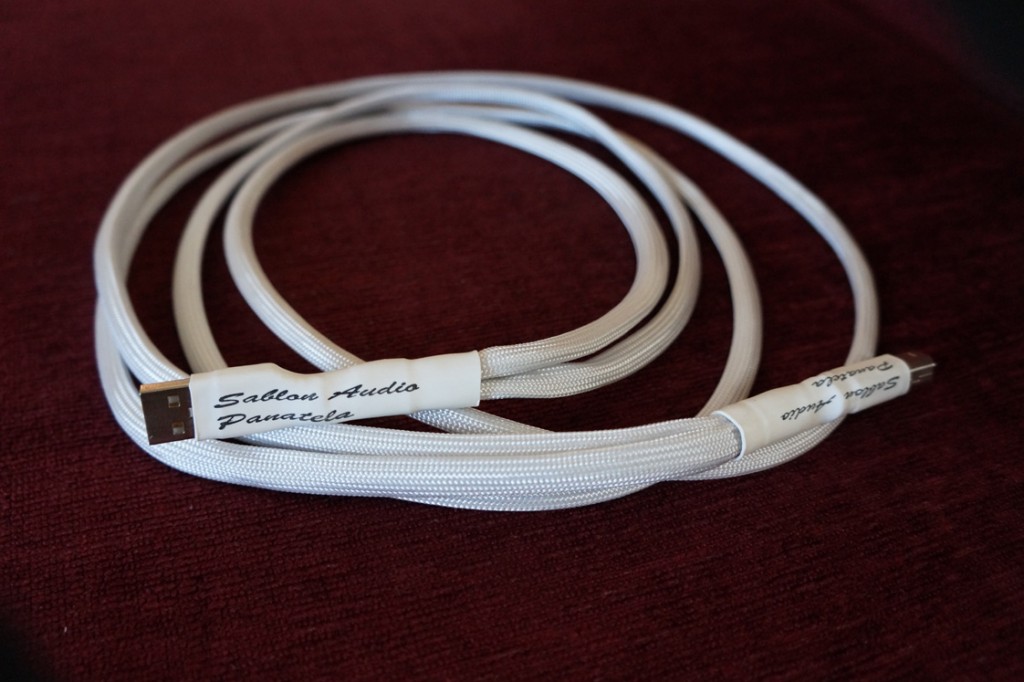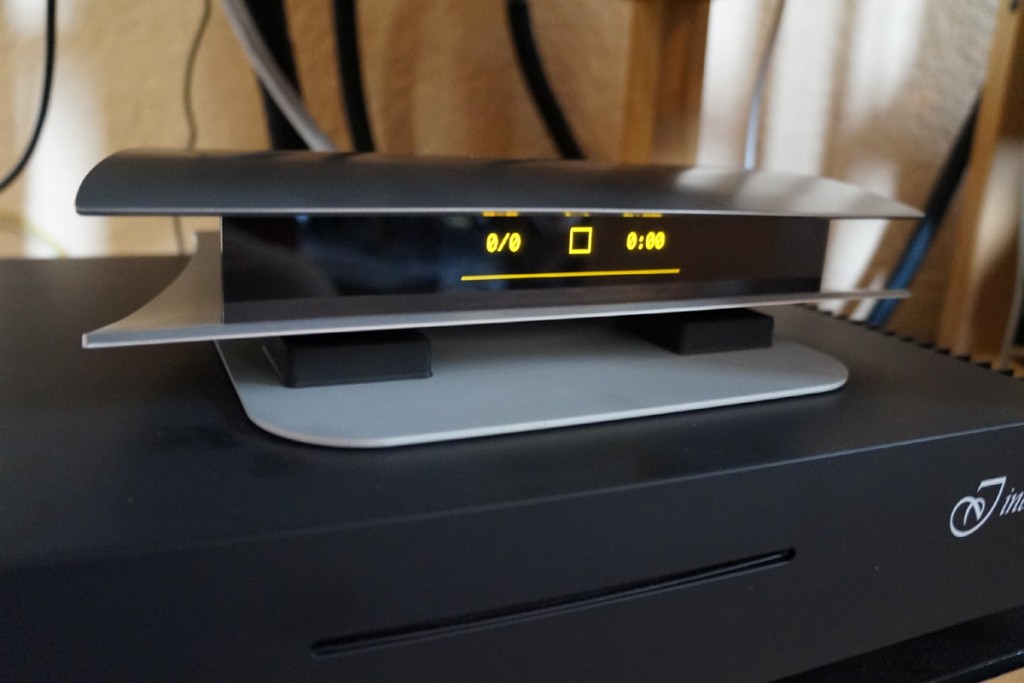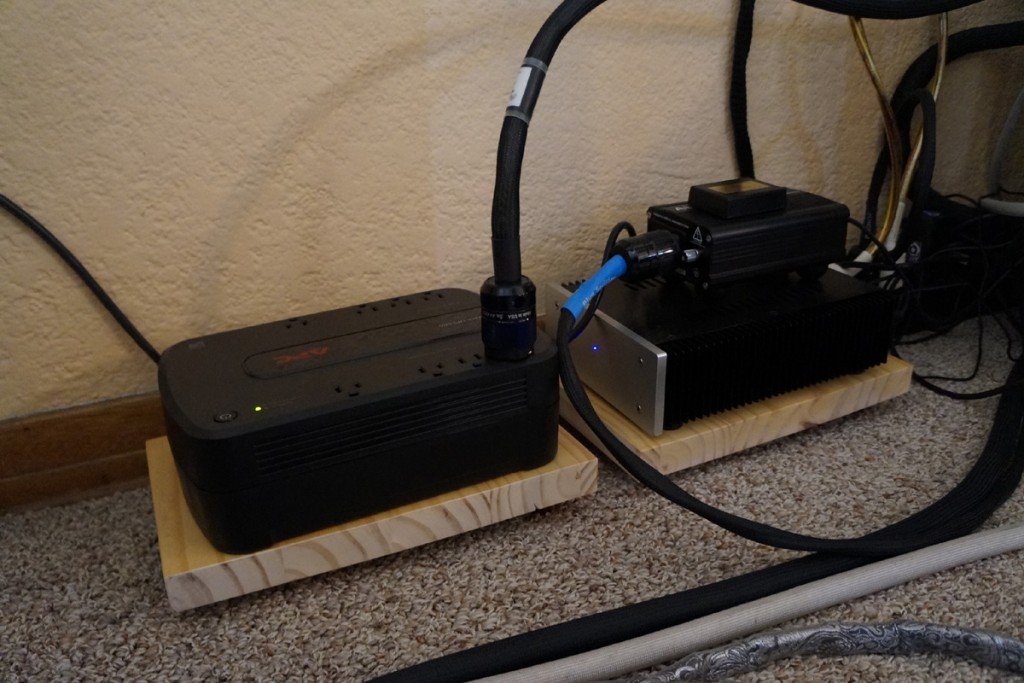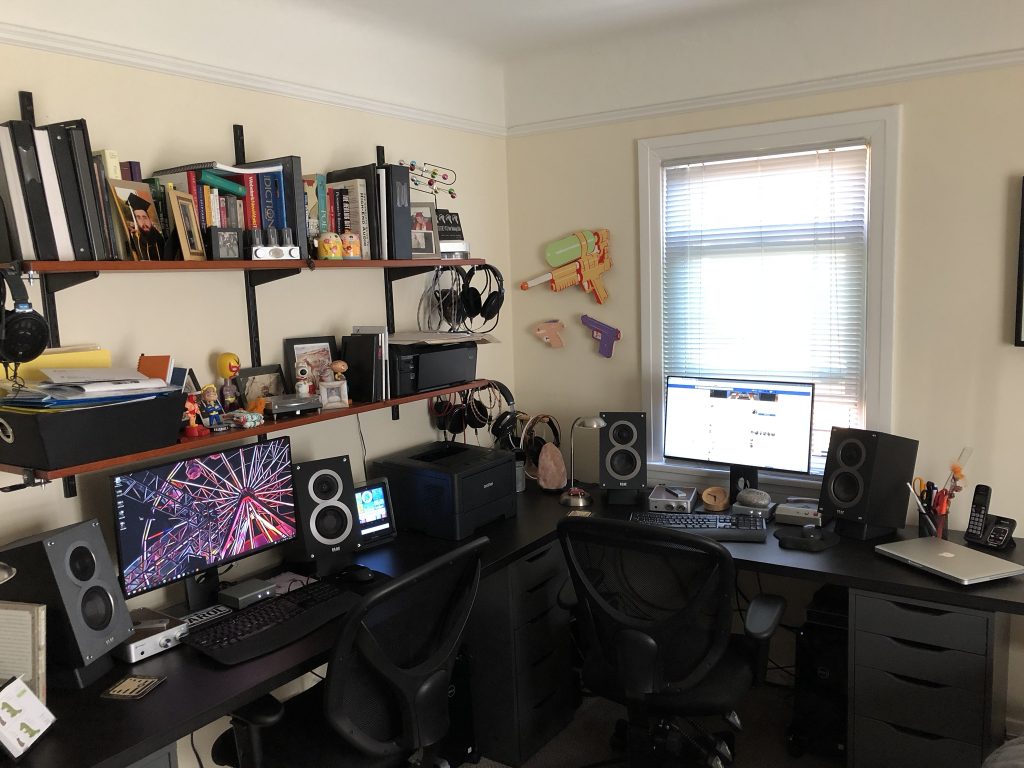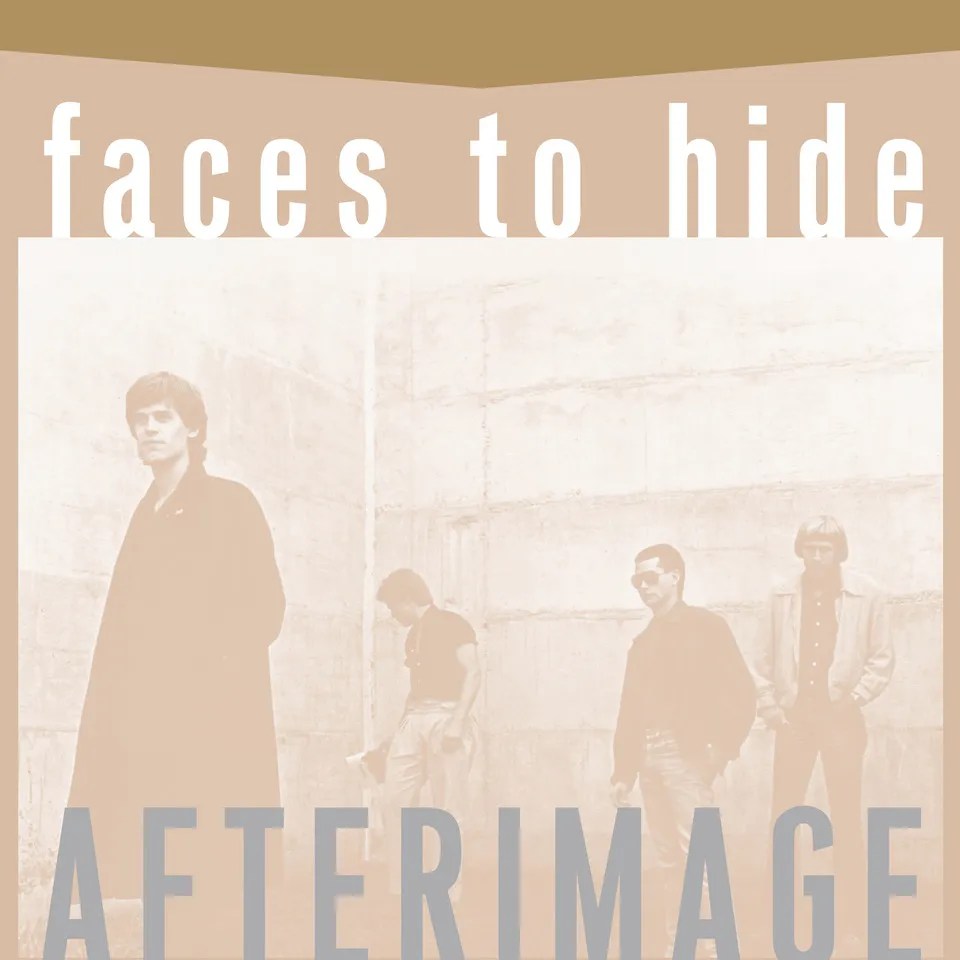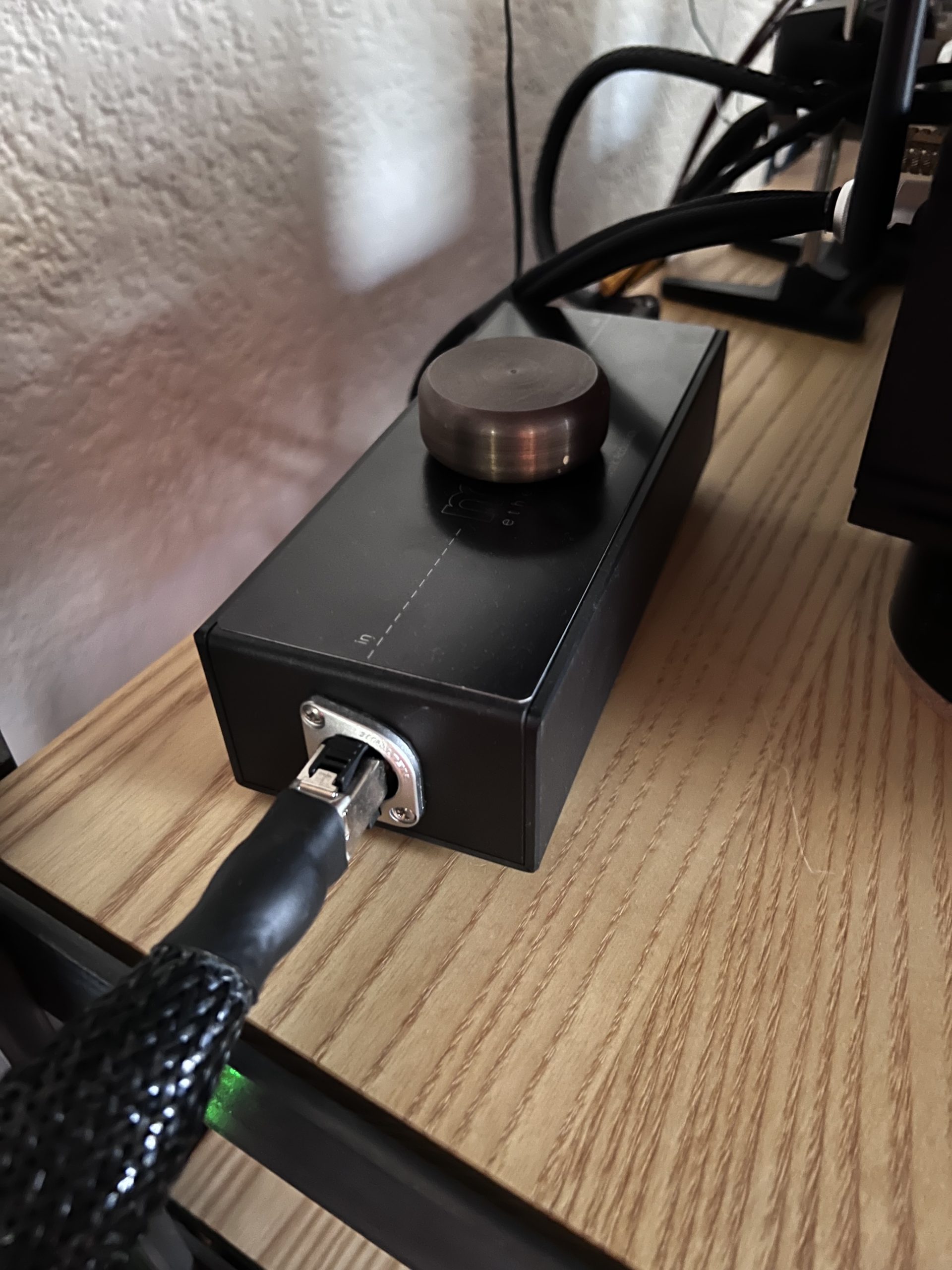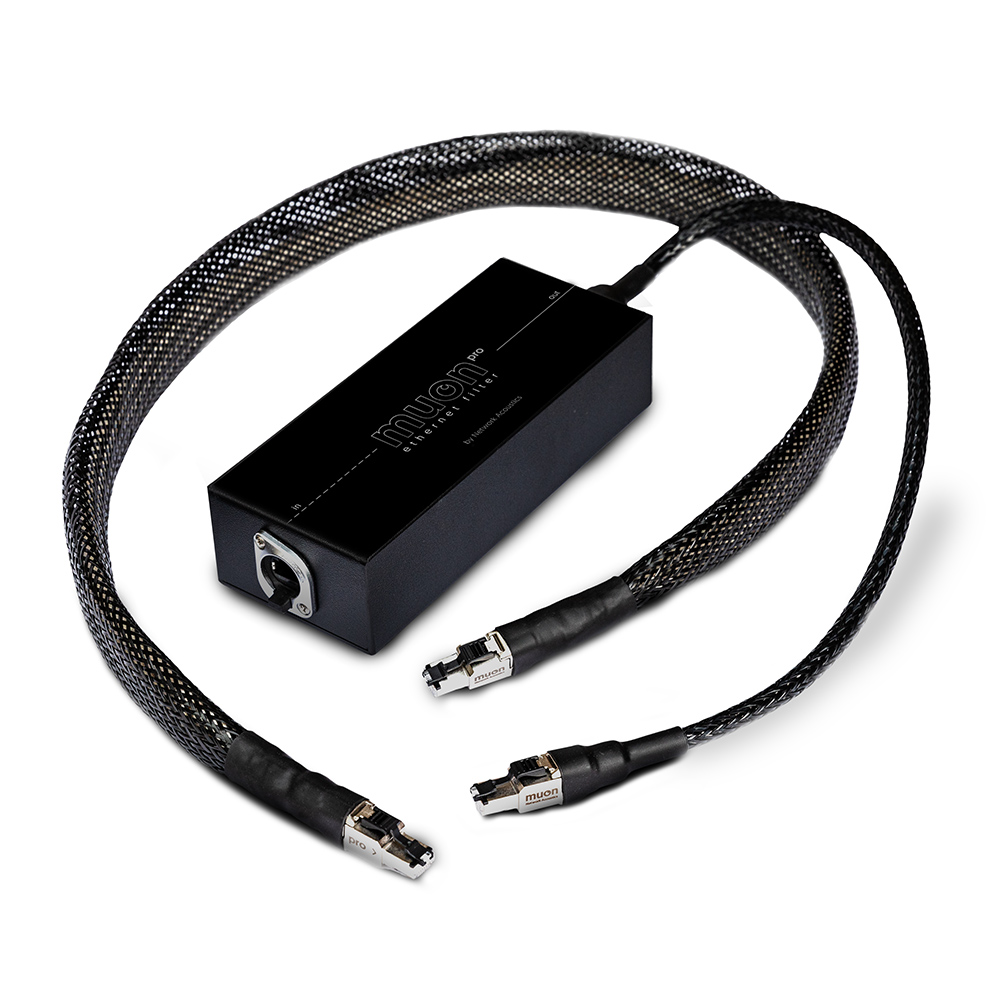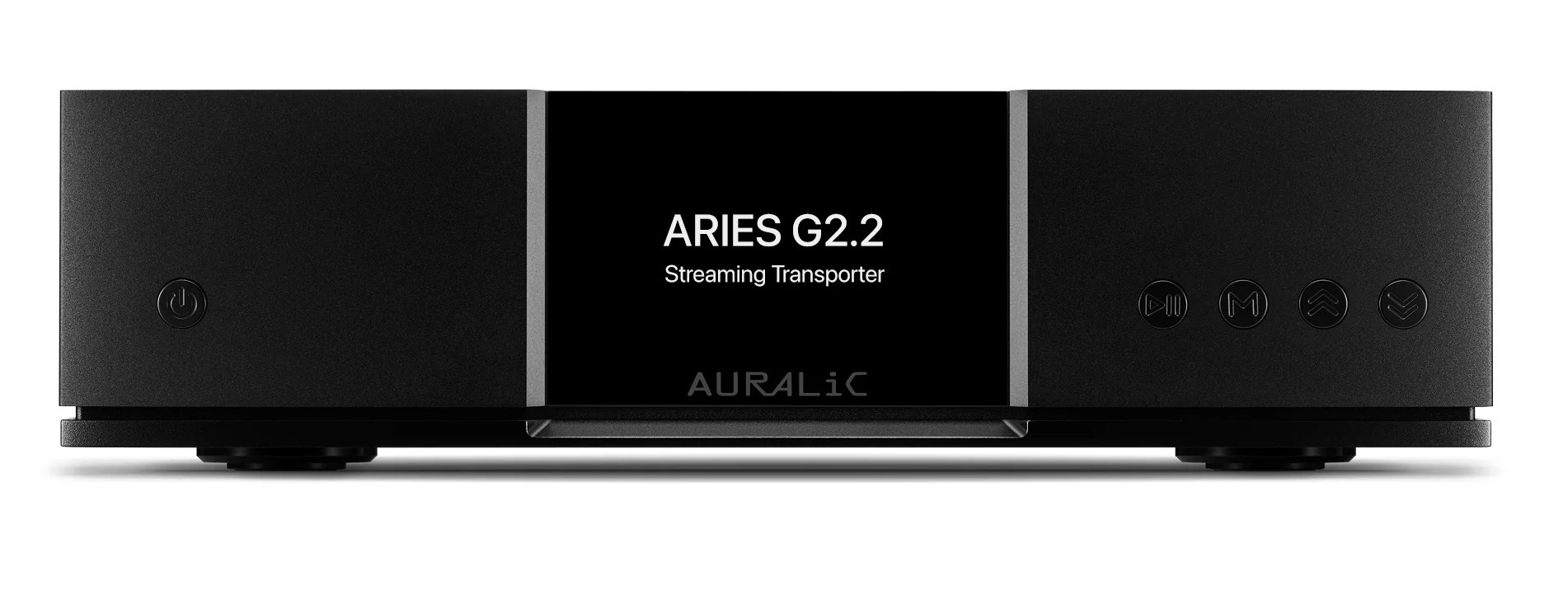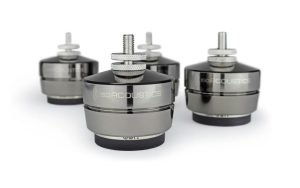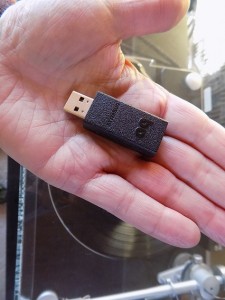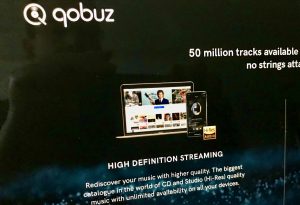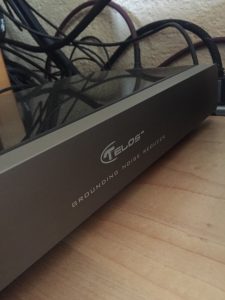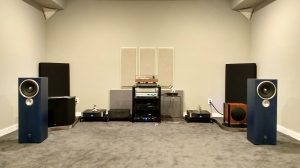Okay so in my last two Ramblings I shared my experiences, and expectations, of music servers or streamers; specifically the Antipodes DX and the Aries from Auralic. Both stunningly good, and yet both at rather opposite ends of the "what does it cost to get the best," and how they are packaged to the end buyer. The Antipodes is a solid $7200 while the Aries is a svelte $1599. Of course with the Antipodes you get an all in one box solution (ripper, SSD drives, software, computer, power supply, USB out only, etc.) so it is going to cost more. It is a well thought out, purposely built device to just stream and store your music as best as it currently can (as opposed to a computer that is not purposely built to stream or store your music). I am sure revisions will become available as Mark Jenkins, the man behind Antipodes, continues with the Antipodes evolution—meaning that the line will get better still. The Aries is just a streamer (USB, S/PDIF, and AES outs) with its own software requiring an external drive/storage solution, ripper, etc. It is also purposely built to stream your music as well as it can (for the price) and while it does come with a quality power supply, for sure it is not an all in one solution like that of the Antipodes. On the other hand the Aries does give you a great degree of flexibility being wifi and you can monkey around to your heart’s content with every conceivable option for storage/drives, rippers, cables, etc. An audiophile's dream…
Which is what I have done… meaning that at this time the Aries is—based only on aural memory—right there with the Antipodes sonically and musically.
Why, pray tell, you ask? Well, first off going from a typical NAS, that is designed for storing files while being accessed by a computer, or in this case the Aries or even the Antipodes if you need additional storage needs, to something like the Inegrita C4 from Certon of Germany and distributed by Certon US ($4300 as configured) made a substantial difference; the C4 is purposely built to store music… purposely built to be an storage source for your music files. Plus it has its own ripper. Of course one could get a better power supply for their NAS (say something like the linear power supply from HD-PLEX) while isolating the NAS from vibrations and so on… and yeah, it is going to get way better. At least I have been told by people in the know. But I went with the C4, and so things got WAY better fast.
The C4 comes with your choice of drives, number of drives, and size of drives operating in a RAID 5 for backup concerns. I went with four 1TB Western Digital Red drives. These drives are fast and very reliable making them one of the best options for music and run in a RAID 5. And the C4 has its own ripper using their own software to ensure bit perfect rips (be patient, this is a slow ripper much like that of the Antipodes—perfection takes time). The C4 rips discs to FLAC (MP3 is an option in the dashboard) though any file format is supported as a file type (3GP, AAC, AC3, AIF, ASF, FLAC, LPCM, M4A, M4B, MP1, MP2, MP3, MP4, MPA, OGG, WAV, WMA). Oh, and it also streams movies. Any file format, anywhere… and it does so really well too.
The C4 is DLNA/uPnP ready and waiting, so all one has to do is connect the C4 from its gigabit Ethernet port with whatever Ethernet cable you choose to your network and the C4 simply shows up as a networked drive. Plug and play baby. It does have a cool interface, accessible on any computer, that is connected to the network allowing one to do anything and be kept abreast of anything—meaning that Certon's support can also access it for any issues.
Being fanless, the C4 runs silently, relying instead on the heatsinks and thermal heat pipes for cooling—meaning that I cannot hear the drives spinning or anything else, even when it is ripping my CDs. It does get warm to the touch, but never hot. Even on hot days here in SoCal. Word is that the drives are not only isolated from each other in terms of vibration issues, but also electrically as well. Way cool. Literally. The C4 also uses a special internal linear power supply and proprietary circuits to eliminate ground noise contamination from Ethernet connection that could affect the unit's performance.
The C4 is built like a tank with a meticulous fit and finish that is typical of the best German craftsmanship. It works, and works really well too… especially with the Aries.
So after dragging over all my music files, the fun hit the fan… splat the music hit me with quite a wallop. Files, err music, sourced from the C4 compared to that from the Synology was whacky shit good. Forget comparisons to the MacMini and Drobo combo, the Aries/C4 combo was on pretty much on equal footing with that heard from the Antipodes. Heft, solidity, weight, presence… that sense of there thereness and space. Yikers. This is good. This is Antipodes good. Not that this sounded just like the Antipodes, clearly I was getting the best of the Aries, but now with the best of the idea behind the Antipodes having its own internal drives. Close. Different? For sure. Dramatic? Not at all. Subtle? Yes. Worth going into? Not for me as the music was way too right. Not that it was wrong prior, but sheesh… this is fun. Bass was rock solid like a massive boulder. It was just there. No need to articulate, extrapolate… elaborate. The C4 did for files that large power amps do for speakers… the music was unleashed with energy and life. Less noise, greater speed, articulation… yeah, this is good.
But, it ain't over. Not yet, not even close. To use the Aries and C4 one needs to add a few other items into the chain. Like a gigabit switch and a 5G wifi router or extender. I had neither.
So I went with the Netgear Nighthawk Wi-Fi Range Extender AC1900 Dual Band Gigabit ($165 on Amazon) unit and the Netgear ProSAFE GS105NA 5-Port Gigabit Switch ($35 on Amazon). But the fun does not stop there. While they worked really well and are the foundation for the Aries review that is the music was great as noted HERE, what else could we do to make things even better? How about getting rid of their wall wart power supplies and go with something bigger and more, well, audiophile? How about the HD-Plex LPS unit ($385 sold direct HERE) in place of the two Netgear's power supplies? Yeah, except the HD-PLEX does not have an output for the switch… an email or two, and they had no problem changing the 9v to 7.5v, and the unit comes with cables and powers up to four different devices. Cool. Well pop the sucker into the chain and crap… better still. Even greater solidity, presence, resolution, articulation… less noise, more stable power… better overall. Perhaps darker than lighter. That is okay. I can live with my music being darker since so much is a touch the other way.
Yeah, but you got to connect the switch and extender together. If you are going to spend that sort of money, why not use something besides generic network cables? How about something like those from AudioQuest, or perhaps Sablon Audio? Well, connecting these, and to the Antipodes for that matter, with AudioQuest Cinnamon ($90) worked really well. Really, really well for that matter. Yeah, for sure we are just transferring packets of information, but when it comes to packets that represent music, things matter. Timing, noise, interference, and so forth all come into play. Here bits are more than bits. And for sure it is not just 1's and 0's moving in the wire, but an electrical signal can be affected by a plethora of outside, and inside, factors. So the better the cable, the better the transfer. I could hear it, and so could everyone else who sat and listened. Not that it matters to you along… with what you are willing to spend, but for sure I get it. Bit at under a Benjamin it is a no brainer. OF course if you want to get silly good and spend more… well then you got the Ethernet cables from Sablon Audio ($400 a meter). These are hand made using materials that reflect not only an educated engineering approach to audio, but an artisanal approach as well.
The Sablon Panatela LAN/Ethernet cable features large gauge solid core copper conductors with extensive shielding carefully terminated to minimize crosstalk between channels, and is fitted with RJ45 plugs from Telegaertner. The covering is a silk-like cloth jacket that exudes quality. The cables come ready to use after extensive break-in on an audiodharma Cable Cooker. Pop these into your system, and you can tell right away that a lot of time and thought went into these cables (for more Sablon Audio go HERE). You get more. More for your money. I hear what I heard with the 'no longer in production' AudioQuest Carbon cables that I wrote about previously (HERE). The Panatela LAN/Ethernet cable are on equal footing. Well actually no. They are several steps up the ladder. They are simply better. What I noted with the C4 and HD-PLEX is built upon even further. Way further than that of the less expensive AQ Cinnamons. But then, it is under $100 compared to $400 so you better get something. And you do. You get a lot of somethings. Like refinement, air, space, resolution… the sonic check list. All from that, less noise and interference nets you more music. Less crap in and more not crap through. Though some people think our music is, well… crap. I will say that the Sablon Panatelas are perhaps darker than the AQ Cinnamons, but then the Panatelas are also more refined. Well, maybe not the cables per se, but certainly the music. These are stellar, and at $400, yeah, they ain't cheap, but then they ain't $1000 either.
Oh, and their USB cable is simply stunning too. One of my clear favorites. You get the same musical presence as with the Sablon Panatela. Smooth, rich, resolution, presence, and for sure tonally towards the darker side… but in my best George Takei impersonation… "Oh my." Love it. More on this in another article along with their AC cords, speaker cables, and interconnects. For more on Sablon in PF try HERE and HERE.
Okay, so what is next? Oh how about placing the Aries on some sort of isolation device… say one from Black Ravioli. Like their simple platform made for a MacMini (£60 direct—website coming soon but till then visit the BR site). It works superbly well under the Aries. Cleaner still, more or everything—more there stuff. Not so much night and day, but yeah this is good. What I have here is the single base using their feet under the unit. It works. Certainly better than sitting on nothing. Remember though, the BR feet point up! Big difference if you have the unit upside down. It still makes a difference but even remotely as good.
And then little things. Well maybe big things depending on how you want to look at it. After all, my goal here is to mitigate noise and crap from interfering with the music. Clean up this to get more of that. Purer… better. Like the LAN Isolator from Acoustic Revive that addresses noise generated in the network by the switches and such. From the Lotus Group's page (more HERE and the charts mentioned below do show what is going on—a must read):
Network audio performance is significantly deteriorated due to the noise generated by network players, HUB, NAS, etc which travels back and forth through LAN cables. Further, exterior noise is also mixed in through the internet line which degrades the sound quality.
The RLI-1 has succeeded in cutting the transmission noise to an extremely low level via the combination of an Isolation transformer and choke coil for common-mode noise rejection.
As you can see from the below measurement results, the noise-reduction effect of the RLI-1 is far superior to that of medical LAN isolators which are only based on isolation transformers.
In addition, by designing with audiophile sensibilities in mind, the RLI-1 does not generate side effects such as the feeling of energy loss and reduced dynamics which cannot be avoided when using medical LAN isolators. The greater the number of units employed, the greater the effect, all without generating any negative side effects.
I have two in the chain now: one at the Netgear extender and one at the C4. You clearly hear more due to there being less. It works. Music is rock solid. No fatigue from whatever is doing what to whatever… you can hear way into the music. It is huge. The music that is. Dynamically, tonally, rhythmically… all the -allys. Yeah. Smoother. Now this smoothness some may not prefer in that it could be too smooth, but I have found any edge or hyped detail to be from noise, and so once it is mitigated, things get smoother. This works. This is fun. (The AR RLI-1 is $315 each, and do not think that ordering them from Amazon for $150 is going to work—cheap knockoffs that are defective and will mess things up… assuming they work at all!)
Play around with some AC cords too. Dynamic Designs has some stellar ones as does WyWires. Ditto Sablon, PAD, and Kubala-Sosna. Here it becomes more about taste and preference. Same with USB and other cables. As one moves up the cable ladder they get better, but this better is more about differences related to preferences and synergy. What I like here you might not there. What works on that might not work on this. That is okay; different strokes, different stuff needing a different something that is different. All about finding what floats your boat and what works on what.
Oh, and put the HD-PLEX on something. A butcher block on some feet works wonders. And for long term safety of the C4, use a battery backup. Never know when the power goes down, and that can be rather unsettling if you lose your drives due to AC fluctuations. Trust me, I know. AC filtration is a must have too. I use an APC unit that allows for 50 mins. The ByBee Stealth unit I have is killer good too. Clean AC is a wonderful place to start.
Okay, so much of what I did here was going to happen anyhow… the switch, extender, power supply, LAN isolators, Ethernet cables, USB cables, platforms, etc. The only real addition would be the the Aries and C4. Now together, the Aries and C4 are a match made in heaven. Adding the rest of these items simply allows everything to play together with less getting in the way. Much different than before with a few of these changes being differents that I liked. Differents that for me, made things better, newer, fresher… Sometimes different is just better because it is, well different. But sometimes these differents are truly an improvement. In the end all my computer-based or streamer-based systems presents my music with presence, weight, air, vividness, smoothness, and dynamics… along with bass heft and slam that is stunningly tactile… that is grain-free and fatigue-free… yeah this good. The system is happy. The music is happy. I am happy. Beer?




